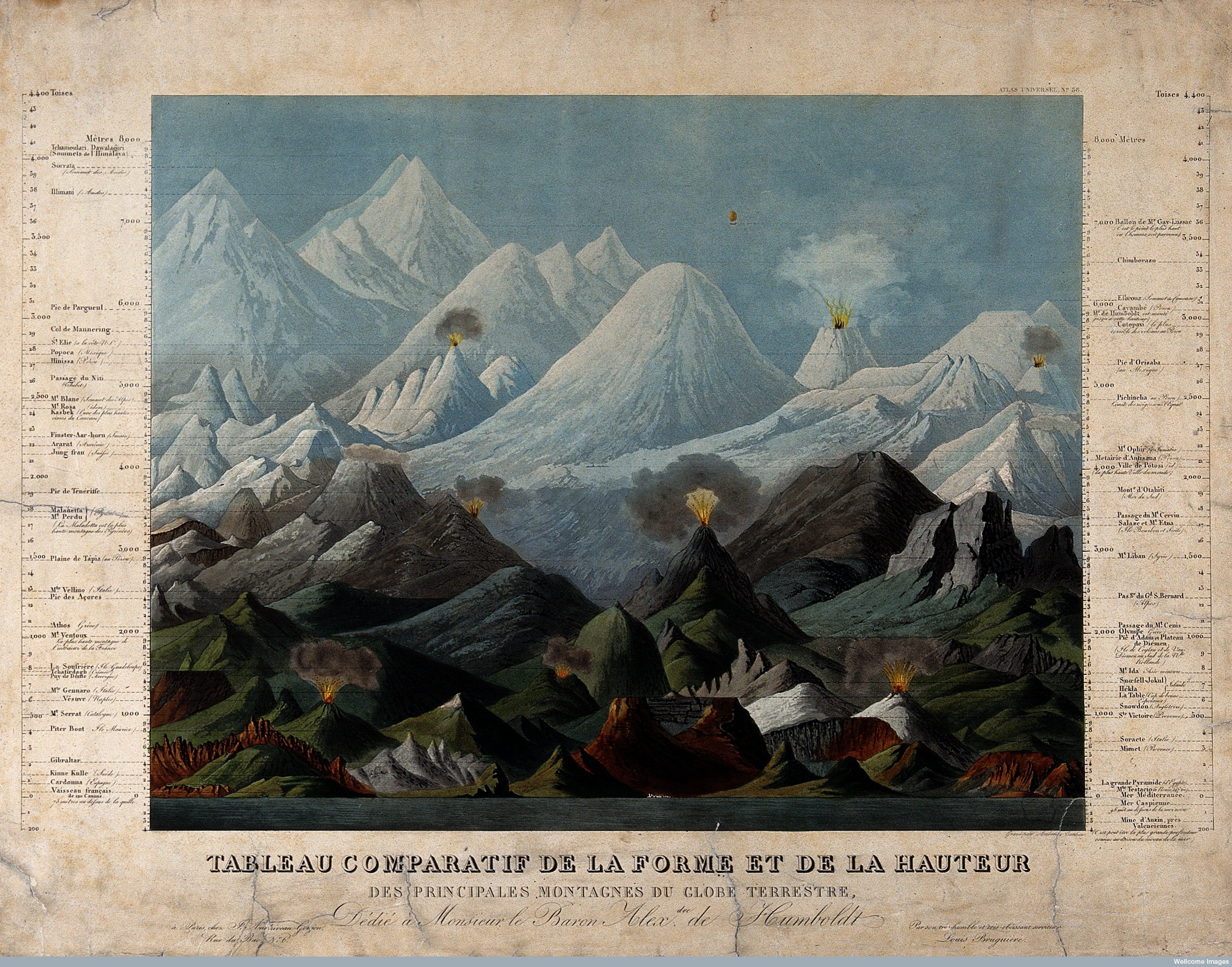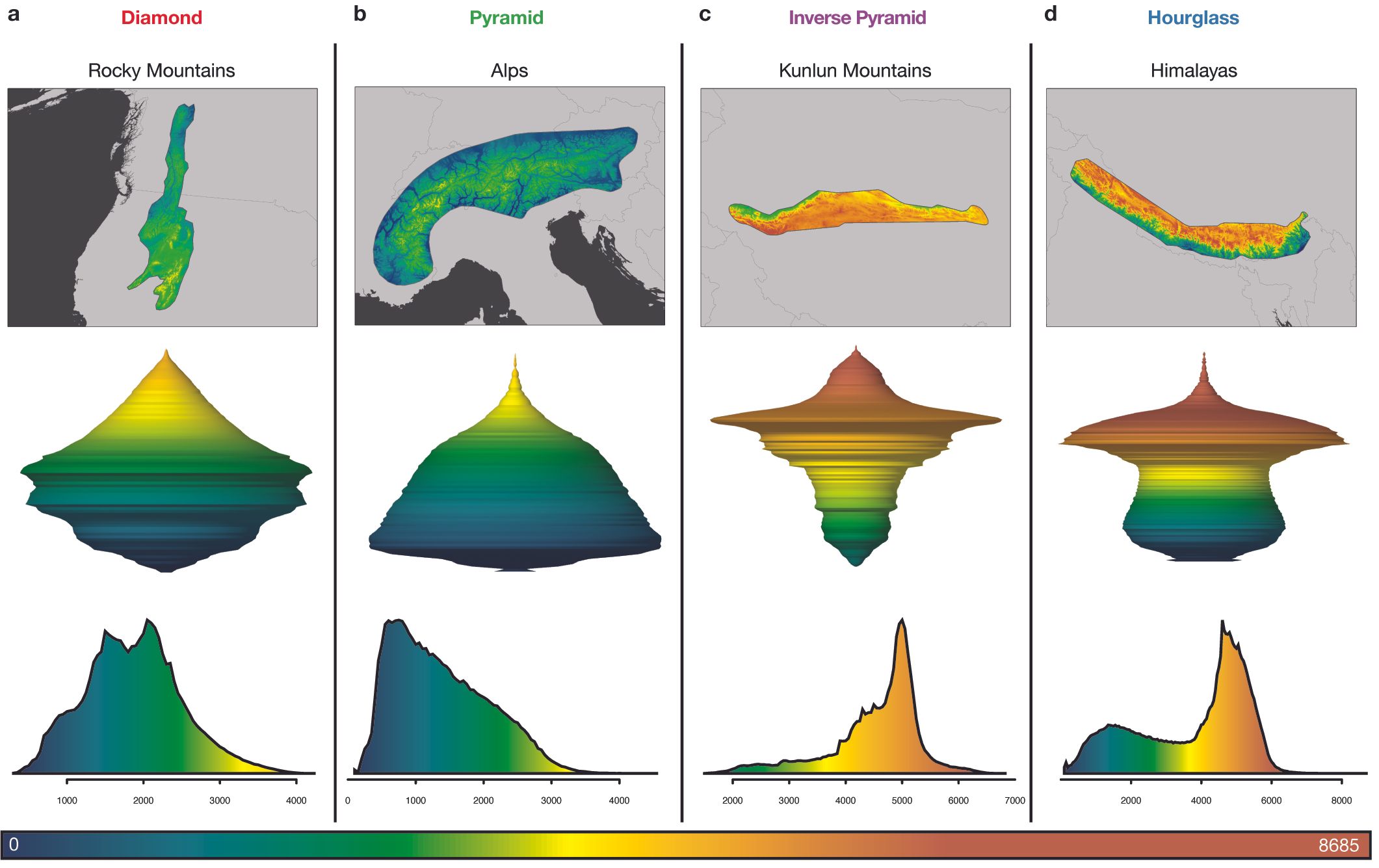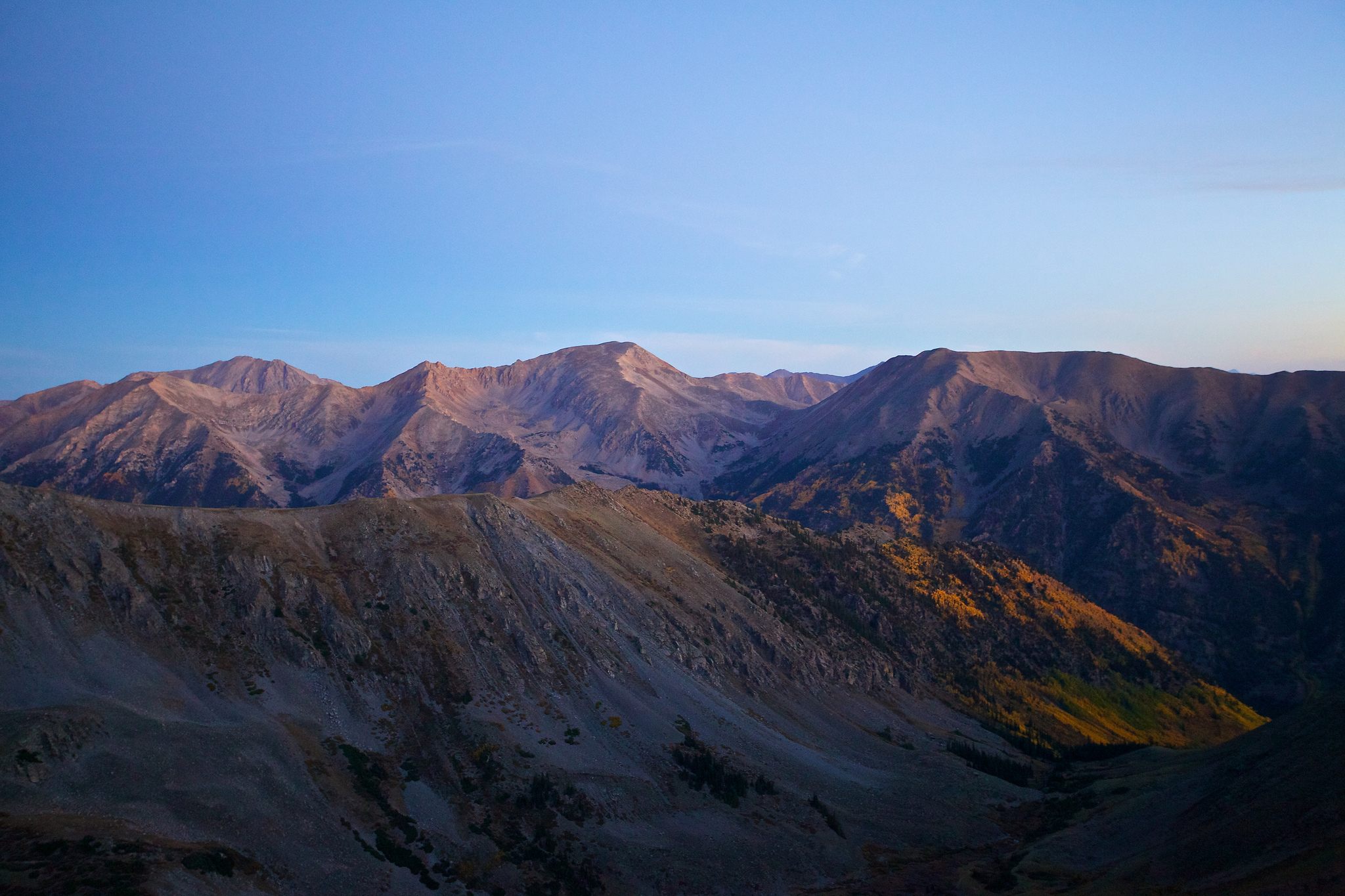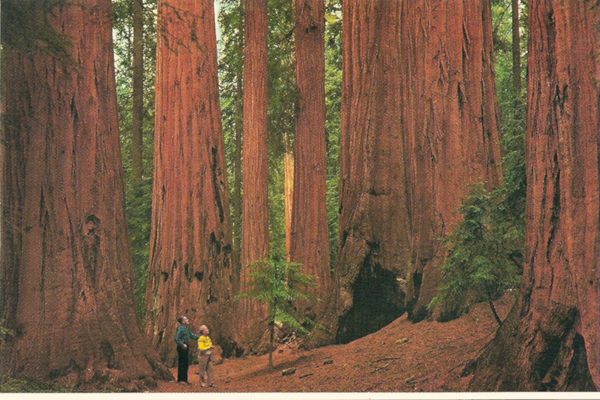Mountains Aren’t the Shape You Think
 ‘Comparitive shapes and heights of mountains’ by Ambroise Tardieu and and Louis Bruguiere, 1817 (Photo: Wellcome Library, London/CC BY-SA 4.0)
‘Comparitive shapes and heights of mountains’ by Ambroise Tardieu and and Louis Bruguiere, 1817 (Photo: Wellcome Library, London/CC BY-SA 4.0)
What is the shape of a mountain?
We’re taught to think of a mountain as a cone, more or less. A pile of earth that slopes ever-upward to a sharp peak in the sky. On a piece of paper, a mountain might be represented by two straight lines that lean against each other. Snow-capped. Simple.
Imagine “mountain,” and a place like Matterhorn might come to mind:

Matterhorn .(Photo: Transformer18/Flickr)
But, as a new study in Nature Climate Change shows, the shape of mountains is much more complicated. Every mountain might eventually end in a peak, but on the way up, it might flatten into expansive plateaus or set from a sharp increase into a slow incline towards the top. By analyzing the area of mountain ranges as elevation increased, Princeton doctoral student Paul Elsen and his colleague Morgan Tingley (now an assistant professor at University of Connecticut) identified four different shapes that describe how mountain ranges behave. And, they found, the traditional “pyramid” shape, that fits Alpine mountains like Matterhorn, actually describes only a minority of mountains.
Elsen first started thinking about the shape of mountains while trekking in the Himalayas, in India, where he’s conducting research on the biodiversity of birds. “I’d been hiking up these really steep slopes,” he says. “At the top, they flattened out and led to these broad, expansive highlands. There are still these triangular peaks that emerge, like Everest. But you get these incredible views, at these plateau areas that are still high in elevation.”
These plateaus, Elsen thought, defied the simplistic notion that mountains slope steadily upwards, decreasing in area as they rise. As soon as he came down to resupply, he started analyzing topography data, first for the area in which he was working and, later, for ten most expansive mountain ranges in the world—the ones that take up the most area.
Even in that small initial sample, he saw three distinct patterns of how mountain ranges are shaped as they inch higher. Eventually, he and Tingley would analyze 182 mountain ranges and identify four shapes that describe how mountains’ area increases with elevation: diamond, pyramid, inverted pyramid and hourglass. In total, more than two-thirds of ranges did not fit with what they call “the dominant assumption in ecology and conservation”—that mountains’ area simply decreases with elevation.

Mountain ranges have four distinct shapes. (Image: Paul Elsen, Morgan Tingley, and Mike Costelloe)
Instead, mountains move upwards in distinct ways. Most commonly, they follow the “diamond” shape—the area available increases, until about midway up, when it gathers into peaks. The Rockies are diamond-shaped mountains:
 Rocky Mountains (Photo: Zach Dischner/Flickr)
Rocky Mountains (Photo: Zach Dischner/Flickr)
Almost a quarter of mountains ranges have an “hourglass” shape, where they slope steeply upwards, before flattening out into broad, high plains. The Himalayas fit this pattern:
 The Himalayas (Photo: Koshy Koshy/Flickr)
The Himalayas (Photo: Koshy Koshy/Flickr)
Less commonly, mountain ranges behave as “inverted pyramids,” in which they become less and less steep as they rise. China’s Kunlun Mountains are an example:

Kunlun Mountains (Photo: Chen Zhao/Flickr)
Many mountains ranges—a little less than a third—do follow the ur-mountain pattern of pyramid growth, though. The Alps are pyramid mountains:

The Alps (Photo: jonas.wagner/Flickr)
Ultimately, these shapes matter most for the animals that live in these ranges—and are being driven upwards by climate change. As the world warms up, species that have etched out a niche at a particular elevation are expected to move upwards, chasing the temperature they prefer. In theory, there’s no upside to being pushed to higher elevations: eventually, any creature that’s headed up the mountain reaches the top and has nowhere else to go.
But what Elsen’s work shows is that, for some species, moving upwards might have some advantage—they’ll have more space to spread out. “Just having available land area does not necessarily mean you’re going to be better off,” he says. “You can be encountering an area that’s not suitable. There could be new competing species. All things being equal, though, if you have more area, it’s going to buffer against all these other threats.” Knowing which species will be moving into larger areas and which will be facing bottlenecks, he says, can help cash-strapped conservationists focus their efforts on the places and creatures most at risk. For the rest of us, this new information has less life and death consequences—it just means we’ll have to rethink how we imagine the mountains we dream of climbing.




















Follow us on Twitter to get the latest on the world's hidden wonders.
Like us on Facebook to get the latest on the world's hidden wonders.
Follow us on Twitter Like us on Facebook